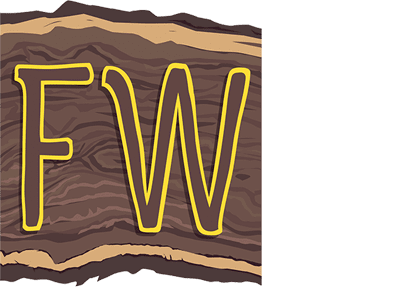FAQs
FAQs
Is urban lumber FSC certified?
Forest certification is a voluntary, market based concept that allows the consumer and everyone in the supply chain to know that they are supporting sound, eco-friendly forest practices, and although urban wood/lumber as, “FSC” certified was presented to the FSC board for certification, it was determined that it is uniquely “green” already and does not require certification. We can provide you with information on where the products came from and the reason they were harvested or sawn so that you can ensure that you are getting “eco-friendly” urban lumber that was not harvested for its timber value.
Why should I buy my lumber from Far West?
Variety and quality would be primary, as we are going to have specialty products that you cannot get at your local lumber store. These may be salvaged all heart old growth redwood slabs, or unique, “one of a kind” urban, salvaged, or reclaimed lumber pieces. Almost all of the hardwoods at your traditional lumber stores come from the east coast. Purchasing your products locally allows you to reduce the overall carbon footprint of your project and get a unique item that no one else has with a great backstory.
What is the difference between Urban, Salvaged, and Reclaimed lumber?
Urban Lumber is the lumber sawn from trees that have come down in storms, or were removed for any reason from your city neighborhoods, yards, parks, and streets. This is the wood that traditionally would have gone to your local landfill, into firewood, or the chipper. By purchasing urban lumber or products made from urban lumber, you are helping to extend the lifecycle of your local community trees.
Salvaged Wood is wood that has not been previously sawn into lumber and is typically still in log form when we acquire it. Many of our salvage logs are windfalls, (trees that came down in a storm). By utilizing these logs for lumber it allows us to extend the lifecycle of the tree.
Reclaimed or Recycled Wood is wood that has previously been sawn into lumber and used in the construction of buildings, bridges, water-tanks, or other structures. It has been removed in some type of a demolition project and instead of going to the landfills, its’ lifecycle has been extended by recycling it and preparing it to be used again.
What is, “Custom Sawn”?
“Custom sawn”, is where we saw a log, cant, or slab into the dimensions that you are looking for. Although we have a large selection of milled products in stock, we still may not have exactly what you are looking for. In that case, we may be able to mill it out of one of the many different logs that we have in stock. Or if you have your own logs, we can mill it to your specs using your logs. Many people like to use their own logs for sentimental value. For instance we recently milled a log for a family who planted a tree when their son was born at their new home. However years later the tree began to break up the foundation and needed to be removed. Instead of turning the log into firewood, this family decided that they wanted to preserve the wood so that even though it is no longer growing in their yard, it will be with them forever as a not only a piece of furniture, but as a family heirloom.
How do I place an order for a custom sawn product?
First of all, we will ask that you either provide us your request for quote in writing or verbally, and then we will ask you to approve our written quote by signing it. Then we will ask that you provide a 50% deposit up front before we cut the log, or re-saw the material to your specs. The balance will be due prior to pick up or shipment of your finished product. Due to limited space, we do ask that your custom sawn products be picked up, or scheduled for shipment within two weeks of notifying you that your product is ready. ** custom sawn products are not returnable or refundable once they have been altered for your project **
What about grading & building code requirements?
We would ask that your structural engineer perform load bearing calculations based upon the unique qualities of the material you will be using. You will find that the material cut from our salvaged Old Growth logs far exceeds the structural qualities necessary to meet current local building codes. Current building codes are based upon lower quality, wider grain material that is more commonly currently available in the second and third growth material that is being sold now. In most situations your architect or structural engineer will work with your local building inspector and their stamp of approval will satisfy the building inspectors’ requirements. However, we can also put you in contact with a transient grader to grade your lumber. We do ask that you check with your local building inspector to be certain of what you need to do.
